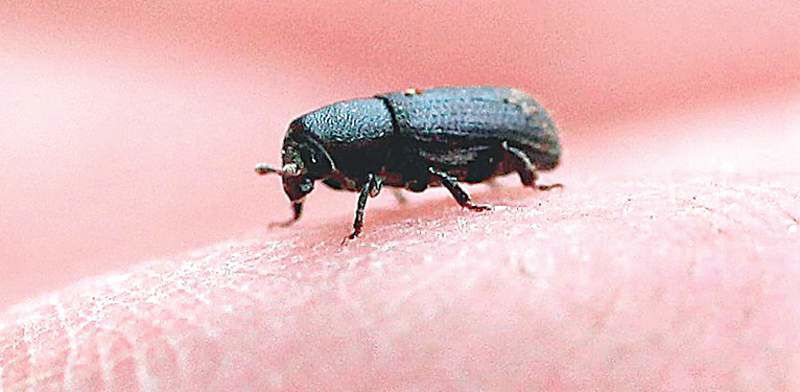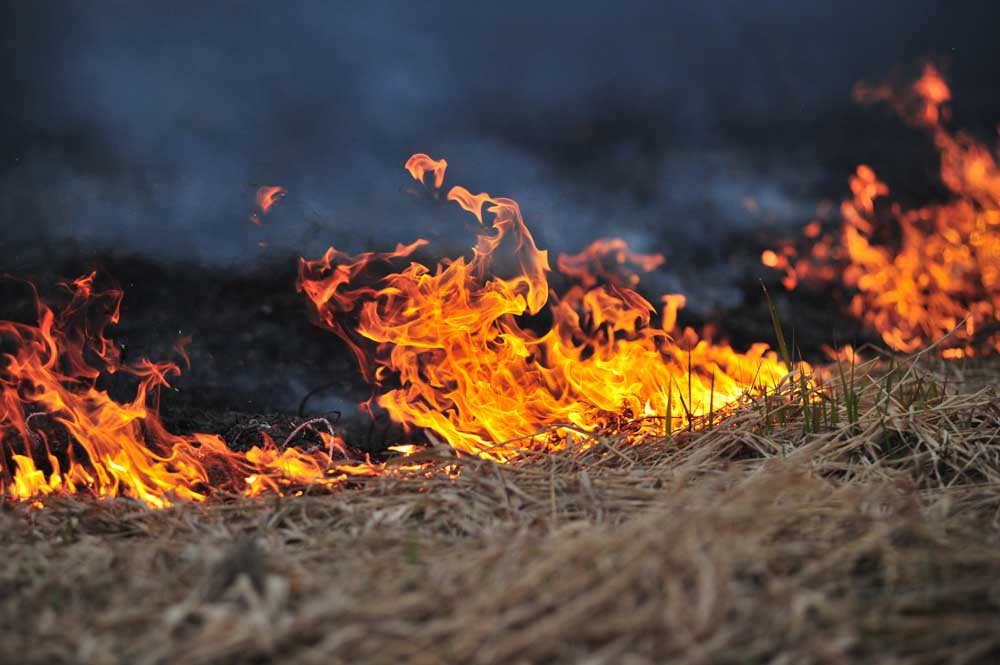Climate change, beetle may doom rugged pine
Published 4:00 am Monday, November 14, 2011

- “They’re kind of cute,” entomologist Connie Mehmel says of mountain pine beetles, but deadly for stands of whitebark pine.
SAWTOOTH RIDGE, Wash. — The bug lady scoots through stick-straight lodgepole and ponderosa, and marches uphill toward the gnarled trunk of a troubled species: the whitebark pine.
The ghostly conifers found on chilly, wind-swept peaks like this may well be among the earliest victims of a warming climate. Even in the Northwest, rising temperatures at higher elevations have brought hundreds of thousands of whitebark pines in contact with a deadly predator — the mountain pine beetle — that is helping drive this odd tree toward extinction.
Connie Mehmel, with the Okanogan-Wenatchee National Forest, is one of a handful of entomologists struggling to track the beetles’ destructive path.
Mountain pine beetles are probably best-known here as the trunk-girdling devils that have reddened and deadened millions of acres of lodgepole, exposing the Northwest to a greater potential for cataclysmic wildfires. But the evolutionary history of lodgepole pine and beetles is so intertwined that those forests in many places are expected to grow back.
Whitebark pines may not.
“What concerns me and a lot of people in my line of work is we are seeing beetles being more active in areas where we didn’t use to see them — particularly in higher-elevation areas,” Mehmel says. “We have thousands of acres of whitebark pine that are being attacked by mountain pine beetles, more than we’ve seen in quite a long time.”
Much attention has been paid to the way pine beetles have gnawed through whitebark forests in the Northern Rockies, particularly in Yellowstone National Park, where the trees’ seed cones provide important food for grizzly bears.
But the beetles also are whittling away at whitebark in Northwest areas once thought safe from bugs.
When it comes to the number of acres or trees killed by beetles and an invasive fungus called white pine blister rust, hard data typically requires aerial surveys and is frustratingly inexact. Researchers instead focus on trend lines.
And in the Northwest, they all point in one direction. A study in the mid-2000s showed whitebark trees had declined by 41 percent in the Western Cascades. Tree declines throughout Washington and Oregon hovered around 35 percent. In the coastal range and the Olympics, blister rust infection ranged from 4 to 49 percent. Nearly 80 percent of the whitebark in Mount Rainier National Park are infected. Whitebark deaths in North Cascades National Park doubled in the last five years.
“We know the incidence of blister rust infection and mountain pine beetle outbreaks is increasing exponentially,” says biologist Amy Nicholas. She authored a report for the U.S. Fish and Wildlife Service this summer that concluded whitebark pine across the West belongs on the Endangered Species List. The agency declined to list the tree, saying it didn’t have the money.
“When you look at the big picture, the studies all say the same thing,” Nicholas says.
A ‘really special tree’
At Sawtooth Ridge, amid snow flurries a few thousand feet above the Methow River, Mehmel raps on a whitebark trunk with her knuckle. She pulls out a hatchet, chops off some bark, and eyes the wood through what looks like a jeweler’s glass.
Knotty, silvery whitebark pines are stubby, crooked, deformed by blustery winds and rarely top 80 feet. They’re found where other vegetation is sparse — on granite shelves or bald knobs or in patches of scraggly brush. In the North Cascades, that’s usually above 5,500 feet.
Unlike trees whose seeds are spread by wind, whitebark pine needs a bird, the Clark’s nutcracker, which opens the trees’ massive cones with its beak, then hides the contents for later meals. A single bird can store 98,000 seeds a season. Many cached seeds are dug up by black bears, squirrels, chipmunks and other birds. But what remains produces a new generation of trees, which may live 500 years or more.
In a region that relies on mountain snows for its water, whitebark pines help hold moisture until late spring. Snow piles up around their trunks, and the trees’ shade then slows snowmelt, reducing flooding.
“It’s a really special tree, a beautiful tree, a very dramatic-looking tree, surviving in steep areas in the midst of rock and lichen,” says entomologist Karen Ripley, with the Department of Natural Resources.
‘Cute’ but deadly
Mehmel, too, appreciates the tree, but also appreciates its enemy.
“Aha! There you are!” she finally says, and uses tweezers to remove a black beetle the size of a match head.
“They’re stout little buggers,” she says. But “they have a cuteness to them.”
That cuteness belies the havoc they wreak. When female pine beetles land in a host, they release pheromones that attract thousands more bugs, which mate and tunnel into the tree. The young later eat tree tissue used to transport water and nutrients. Then the tree dies.
Beetles are an essential part of lodgepole or ponderosa forests, killing off weak or older stands, which then burn. Fire helps release seeds for the forest to regrow. During warm periods, the beetles reproduce faster, which can spur epidemic attacks like the unprecedented one currently under way across the West.
But in whitebark pine, beetle epidemics historically have been rare because the trees appear in places too cold for bugs to do much damage — until lately.
In 2007, the U.S. Fish and Wildlife Service reported, beetles killed whitebark pine trees across half a million acres in the West — the most, at the time, since record-keeping began. Two years later, beetles killed trees on 800,000 acres. And unlike lodgepole, whitebark pines produce few seed cones and do so late in life. They aren’t set up to survive massive slaughter.
Troubling signs
Just on Sawtooth Ridge, one of the hardest-hit areas in the region, Mehmel’s rough estimates suggest several hundred thousand whitebark pines have died since 2004. Others believe those estimates are too high, but don’t dispute the trend.
“Twenty years ago you wouldn’t have seen something like this,” Mehmel says. “Conditions would not have supported it.”
For many species, it’s too soon to fully grasp the effects of climate change. For whitebark pine, most signs are troubling.
Blister rust, a fungus brought from overseas a century ago, is epidemic. The fungus doesn’t always kill, and pockets of trees in Southern Oregon and near Sunrise in Mount Rainier seem resistant. Research on transplanting those strains has been encouraging.
But even mild infections can drive off Clark’s nutcrackers, making it impossible for trees to reproduce. And weak trees are more susceptible to beetles.
“There’s just a deadly synergy between beetles, blister rust and climate change,” said Jesse Logan, a whitebark expert in Montana.
Still, whitebark is a survivor. While some creatures may migrate in response to a changing climate, whitebark pine has been doing so through the ages. It has moved ever higher on the landscape to avoid competition with other trees. But that option may not be available for long.
“It’s evolutionary-ecological habit of escape has been to move to places where other trees can’t make a living,” said Logan. “But the pace of change is unprecedented. And it has nowhere else to go.”








